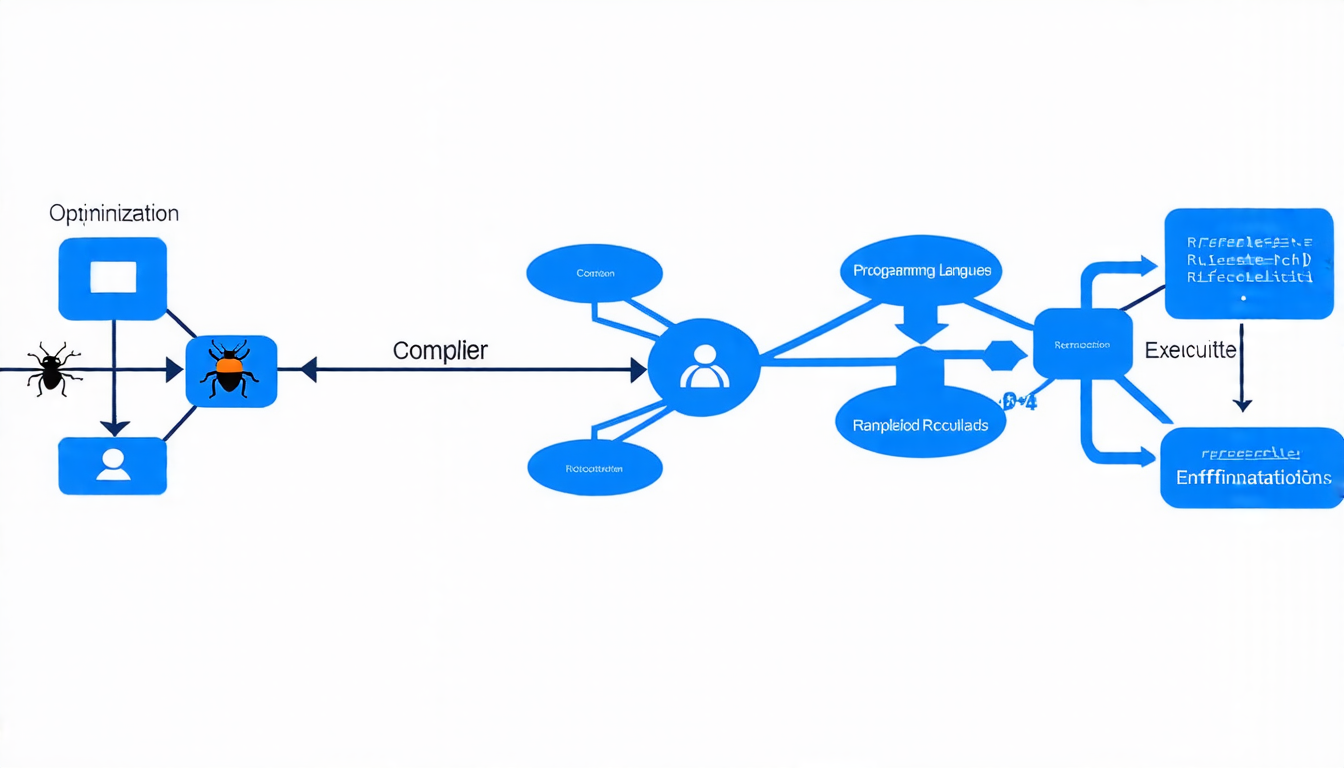Wednesday 16 April 2025
The quest for a bug-free compiler has been ongoing for decades, with developers employing various tactics to weed out errors and ensure their code runs smoothly. Now, researchers have made a significant breakthrough in this area by introducing DESIL, a novel technique designed to detect silent bugs in the MLIR compiler infrastructure.
For those unfamiliar, compilers are crucial software components that translate high-level programming languages into machine-readable code. While they’re essential for making our computers tick, they’re also prone to errors, which can manifest as crashes or unexpected behavior. Silent bugs, in particular, are a nasty problem because they often don’t trigger any visible symptoms, making them notoriously difficult to detect.
The MLIR (Multi-Level Intermediate Representation) compiler infrastructure is a powerful framework that enables the creation of compilers for various programming languages and domains. While it’s an impressive achievement, its complexity has introduced new challenges in ensuring bug-free operation. That’s where DESIL comes in – a technique that tackles silent bugs head-on by generating UB- free (undefined behavior-free) programs and determining optimal lowering paths to prevent redundant or circular application of lowering passes.
In essence, DESIL is a game-changer because it addresses two critical issues: undefined behavior elimination and lowering path optimization. By doing so, it enables developers to create more reliable compilers that can detect silent bugs with greater accuracy. The technique’s effectiveness has been demonstrated through extensive testing, which revealed 42 previously unknown bugs in the MLIR compiler infrastructure.
One of the key innovations behind DESIL is its ability to generate UB-free programs. This is achieved by defining a set of undefined behavior elimination rules that ensure the generated code conforms to well-defined semantics. The resulting programs are then subjected to differential testing, which involves comparing their execution results under different optimization passes.
The second component of DESIL is its lowering path optimization strategy. Here, the technique determines an optimal sequence of lowering passes to transform MLIR programs into executable representations. This is a critical step because redundant or circular application of lowering passes can lead to incorrect compilation results.
The significance of DESIL cannot be overstated. By detecting silent bugs with greater accuracy, it has the potential to improve the reliability and maintainability of compilers, which in turn will benefit developers and users alike. The technique’s applicability extends beyond MLIR, as it can be adapted to other compiler infrastructures that rely on similar optimization passes.
Cite this article: “Silent but Deadly: A Novel Approach to Detecting Bugs in Compiler Infrastructure”, The Science Archive, 2025.
Compiler, Bug-Free, Desil, Mlir, Silent Bugs, Undefined Behavior, Lowering Path Optimization, Compiler Infrastructure, Differential Testing, Reliability.







